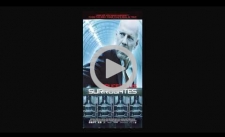|
The Four Key Trends Driving the Proliferation of Visual
Perception
With so much happening in computer vision
applications and technology, and happening so fast, it can be difficult
to see the big picture. In this talk, Jeff Bier, Founder of the
Embedded Vision Alliance and Co-founder and President of BDTI, examines
the four most important trends that are fueling the proliferation of
vision applications and influencing the future of the industry:
- Deep learning — more than just a passing fad, the Embedded
Vision
Alliance’s multi-year survey of vision developers shows that deep
learning is re-shaping the future of vision.
- Democratization — thanks to cloud computing and higher
levels of
abstraction in both hardware and software, developers now have much
easier access to vision than before.
- Fast, cheap, energy-efficient processors — massive
investment in
specialized processors is paying off, delivering 1000x improvements in
performance and efficiency, enabling vision to be deployed even in very
cost- and energy-constrained applications.
- 3D perception — the introduction of 3D optical sensors into
high-volume applications like mobile phones and automobiles has
catalyzed a dramatic acceleration in innovation, collapsing the size,
cost and complexity of 3D perception.
Bier explains what’s fueling each of these key trends, and
highlights
key implications for technology suppliers, solution developers and
end-users.
Think Like an Amateur, Do As an Expert: Lessons from a Career
in Computer Vision
In this 2018 Embedded Vision Summit
keynote presentation, Dr. Takeo Kanade, U.A. and Helen Whitaker
Professor at Carnegie Mellon University, shares his experiences and
lessons learned in developing a vast range of pioneering computer
vision systems and autonomous robots, including face recognition,
autonomously-driven cars, computer-assisted surgical robots, robot
helicopters, biological live cell tracking and a system for sports
broadcasts. Most researchers, when asked their fondest desire, respond
that they want to do good research. If asked what constitutes “good
research,” they often find it difficult to give a clear answer. For Dr.
Kanade, good research derives from solving real-world problems,
delivering useful results to society. “Think like an amateur, do as an
expert” is Dr. Kanade’s research motto: When conceptualizing a problem
and its possible solution, think simply and openly, as a novice in that
field, without preconceived notions. When implementing a solution, on
the other hand, do so thoroughly, meticulously and with expert skill.
In his research projects, Dr. Kanade has met and worked with people
from diverse backgrounds, and has encountered many challenges. While
exploring the technical side of some of his most important projects, he
also describes experiences that highlight the enjoyable aspects of a
researcher’s life—those that have occurred accidentally or inevitably
as his “Think like an amateur, do as an expert” approach has guided his
interactions with problems and people.
|
